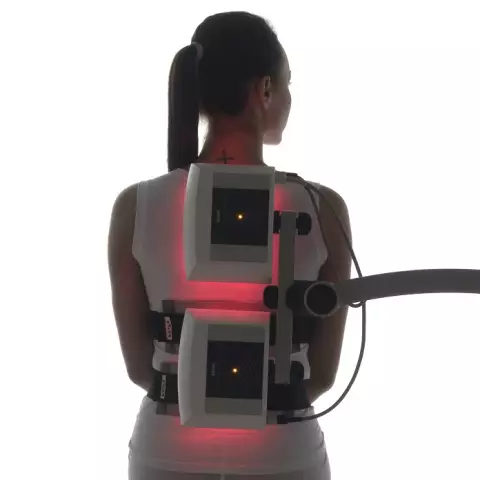- Author Rachel Wainwright [email protected].
- Public 2023-12-15 07:39.
- Last modified 2025-11-02 20:14.
Magnetotherapy
The phenomena of magnetism have been known to man since ancient times. For example, in ancient China and India, many diseases were treated by applying magnetic stones to sore spots. It is known that Cleopatra, the Egyptian queen, used the miraculous properties of magnetic amulets to preserve her youth, beauty and health.
Magnetic therapy was most widely used in the 18th century. At first, they began to use it in France, and then it reached America. In those days, they used rather primitive methods using all kinds of magnetic bracelets, insoles and belts. Already in the 20th century, magnetotherapy was recognized as an official medical technique and since then has been an integral part of physiotherapy.
Indications for magnetotherapy
The magnetic field has an extensive healing effect, so it can be used to treat a wide variety of diseases. To date, numerous studies have already made it possible to speak with confidence about the beneficial effects of magnetotherapy on the human body as a whole.
Mostly indications for magnetotherapy are:
- Improving blood circulation and general condition of blood cells;
- Stimulation of the work of enzyme systems;
- Restoration of normal cell polarity, which is disturbed as a result of pathological changes in tissues and organs.
Description of the magnetotherapy method
Depending on the indications for magnetic therapy, both stationary and portable devices can be used.
Portable devices are ideal for home magnetotherapy. For this purpose, two working surfaces of the apparatus are applied to certain active zones. Induction coils are located inside the surfaces, with the help of which a magnetic field is generated. Magnetic therapy at home is convenient because it can be performed at any time. You can set the desired mode and the time after which the portable device is removed.
The stationary equipment is a large inductor in which the person is placed completely in a horizontal position. The patient's head is at the same time outside, which is very convenient for people suffering from claustrophobia. The device turns on, and the patient just lies for the required amount of time.
Since the magnetic field is not a physical substance and not an electrical impulse, a person cannot feel it. Therefore, according to reviews, magnetotherapy is not accompanied by any sensations.
Consequences of magnetotherapy
Magnetotherapy, according to reviews, copes well with the consequences of asthenic syndrome. Therefore, this method is very popular in the complex treatment of alcoholism. The fact is that after several sessions of magnetotherapy, approximately 70% of patients experience significant relief.
Magnetotherapy activates the internal biological reserves of the body and helps to consolidate the effect of drug treatment for a longer period.
As part of a complex treatment, magnetotherapy helps to restore the normal functioning of organs at the cellular level. As a result of exposure to magnetic radiation, the intellectual functions of the brain are restored.
Actually, the recognition of magnetotherapy as an official technique already speaks of its high efficiency. Physiotherapists often use this method to treat many conditions.

Patients note in reviews of magnetotherapy a significant improvement in the general condition of the body, raising mood, the disappearance of any sleep problems (difficulty falling asleep, insomnia, etc.). Many people note an increase in the level of efficiency, an improvement in mental activity, the disappearance of autonomic disorders (surges in blood pressure, headaches, a feeling of muscle weakness).
Contraindications to magnetotherapy
The magnetotherapy technique has a prolonged duration. For example, an ordinary taken pill acts for several hours, but a session of magnetotherapy acts on the body for several days. That is why, despite all the seeming safety of the method, you should not use it uncontrollably. This is especially true for magnetic therapy at home. Clear instructions must be followed and the exposure time must not be exceeded.
The absolute contraindications to magnetotherapy are:
- Cardiovascular diseases in the stage of decompensation (heart failure stage 2-3, aneurysm of the heart, large vessels or aorta, pre- or post-infarction period, severe heart rhythm disturbances);
- Active tuberculosis;
- The patient has a pacemaker;
- Increased tendency to bleed;
- Acute mental disorders (paranoid states, schizophrenia, psychosis);
- Active infectious diseases;
- Systemic blood diseases;
- Alcoholic intoxication;
- Sharp general exhaustion;
- Thrombosis, including recurrent ones, as well as thromboembolic complications;
- Any conditions accompanied by increased body temperature;
- Diseases of the peripheral and central nervous systems (injuries of the spinal cord and spine, ischemic cerebrospinal strokes, impaired cerebrospinal circulation);
- Diseases of the gastrointestinal tract (stomach and duodenal ulcer, colitis, biliary dyskinesia, chronic gastritis);
- Acute and chronic diseases of the genitourinary system (prostatitis, cystitis, menopause, painful menstruation, etc.);
- Skin diseases (burns, frostbite, eczema, pressure sores, sluggish wounds).
In addition, there are some individual contraindications to magnetotherapy.
Found a mistake in the text? Select it and press Ctrl + Enter.






